High Frequency Research
High Frequency Research
20-10-2017
Magic and Machines - Andrew Dawson
In the tarot card 'Wheel of Fortune', a mechanical wheel revolves, representing changing luck. The tarot represented a vehicle for women to speak on issues the patriarchy restricted them from talking about. Invoking spirits as the communicators of heretical ideas like feminism, abolitionism, communism allowed for these assertions to be made without persecution. "The occult is an unplaceable relationship between the material and spiritual; it is words shaping reality". Links can be seen between the occult and the programmed -- in this schema words and rituals produce material and change in reality. As “any sufficiently advanced technology is indistinguishable from magic”, we tend to stop being critical of these products, how they are made, how they affect society, and how to challenge its power. We talk about tech lords with words like wizards because they have reshaped reality in a manner that we cannot understand or resist. It dirties the term magic, a site of alterity, opposed to rationality, hegemony and capital.
Our dystopias reflect our concerns with the social atomisation and individualisation, trends currently driving social change under neoliberal social and economic systems. Consider UBER, which operates at a loss and is based on destroying socialised forms of transport in order to get a monopoly after the social democratic system is destroyed. The political implications of technological development must be addressed, as the desire of the worker for social change butts against the desire of industry for using tech advancements for increased profit and control. Therefore industry seeks to remove the worker wherever possible. Luddites were not against technology, they were against capitalist classes using it to drive them into poverty and maximising private profit. Who does technology work for? How can we change the organisation of society around technology? We must all become magicians to lever this change in the management of tech.
18-10-2017
Zac Blas Radio Sonia MACBA podcast
Network is a hegemonic term to describe all technological interface and social reality. How can we get beyond viewing capitalism/internet hegemony as a totality in order to see viable forms of resistance?
paranode - (Off the Network: Disrupting the Digital World Ulises Ali Mejias) beyond the topological limits of a distributed network diagram. The space outside of the network topology. The network thinking doesnt consider that space. "the dildo techtonics of the internet"
nodocentrism - nodes and edges, dots and lines make up a network -- a hegemonic form of social reality by organised networks
"the internet will disappear" the world will become the internet, and the internet will become the world. the logic of totality -- the internet as the world totalises the world. where is the outside?
alternatives to the network itself, through a queer and feminist perspective
engaging in queer and feminist, transgender politics today cannot ignore technology, tech complete cuts through and shapes power today
tactics of non-existence: If existence is a means of control, then non-existence is a form of evading control. how do we non-exist towards these machines?
art of representation v. art of action : does art need to be didactic in order to have agency for change?
the prison house of language (jameson) - if you take a purely formal approach to literature, you miss out on context.
phil agre - surveillance and capture - surveillance is an inaccurate term for whats happening, the term should be capture. capture is not visual, its linguistic. grammars of action should be developed. how does a machine know that its looking at a face? through a computational grammar of the face.
connection between language and formal properties: capture tech takes the body as purely formal.
new work: capture torture dungeon inspired by s&m : technologies are bad is too obvious, folding in complicity and desire for these techs make it more interesting, bringing it into s&m is an complex exploration of these relationships : enacting violence, pleasure, resistance
future torture scenario, dead ringers
panopticism (full on enclosure) is not the paradigm of surveillance systems
predictive policing, pattern of life: dev mil tech domination, control , imperialism
pattern police
immobilisation can happen through mobile power at any moment, why panopt is not a good analogy (airports being the most obvs)
biometrics is intrinsically linked to the body, queer, feminist, antiracist, trans concerns as these populations are the most violently affected
who is constructing the pattern of life
biometrics as tech of identification , #1 border security tech, writing a new def. of identity itself.
biometric def. of identity is a disembodied aggregate of data that travels freely across global networks -- identity can be taken out of you, yet still be a 100% true rendering of you, can be removed from you, circulated and shared.
POC can be seen by biometrics cause they were calibrated by white people
17-10-2017
Case Study - Camille Henrot @ Palais de Tokyo
Titled “Days are Dogs”, Henrot’s exhibition questions the relationships of authority and fiction that determine our existence, and is organized around one of the most foundational structures in our lives – the week.
Years are measured by the journey of the Earth around the Sun; months derive from the position of the Moon; days correspond to a rotation of the Earth. The week, by contrast, is a fiction, a human invention. Yet that does not diminish its emotional and psychological effects. We experience it as a narrative cycle, structured by the particular qualities of its component days.
Each room of the exhibition evokes a day of the week – an open world where conventions, emotions, and individual freedom are playfully confronted with one another.
Our days take their names from the cosmos and mythology – the Moon for Monday, the god Thor for Thursday, the god Saturn for Saturday – and the viewer is invited into a new human mythology, both contemporary and timeless: a mythology from the Internet age, where emotions are marked by each day’s hashtag. The exhibition as a whole operates through the composition and recomposition of archipelagoes of artworks – works by Camille Henrot herself, some of them presented for the first time, as well as those by international artists with whom she entertains a dialogue, broadening the scope of each day.
The exhibition explores the ways in which the invention of the seven day week structures our relationship to time. It reveals the way the notion of the week reassures us — giving us routines and a common framework — just as much as it alienates us, creating a set of constraints and dependencies.
Titled “Days are Dogs,” in reference to the expression for the sultry days of summer (“dog days”), the exhibition will be divided into seven thematic parts, each dedicated to a day of the week. Viewers will experience works that reflect the emotions and activities associated with each day as they move from day to day. Using this structure to organize her exhibition, Henrot emphasizes the impact of the dependencies, frustrations, and desires that emerge while living through the rhythm of the week. The exhibition explores ideas such as submission and revolt, both on an intimate, personal level, dynamic of sexual relationships, for instance — and on a larger social level, where sociopolitical, economic and ideological power is abused and suffered.
11-10-2017
Susan Schuppli Documentary Films
Material Witness is an experimental documentary that investigates the question of political violence by asking how we might access grave events when evidence of their histories slowly disappears into the past or is forcefully repressed. It explores this condition through an analysis of two massacre videos produced during the final days of ethnic conflict: one shot in Izbica Kosovo in 1999 and the other, an anonymous execution video captured by mobile phone in northern Sri Lanka sometime in 2009. In the case of the conflict in the Balkans, the camcorder tape was entered into legal proceedings against Slobodan Milošević where it functioned to provide crucial evidence of war crimes. With respect to the Sri Lankan context, the mobile phone footage video, which surfaced in the UK, has only circulated within the courts of public opinion. Despite two UN technical enquiries, the Sri Lankan state continues to dispute the authenticity of the video and the heinous crimes depicted have therefore gone unpunished, as indeed have most others. Material Witness explores the various contexts in which these two videos eventually appeared and were made to “speak” as technical witnesses to a crime. Its does so by probing the ways in which non-human entities—media materials—register trace effects of the violence out of which they emerged as well as the ways in which they disclose the partisan practices and institutional protocols that enable their histories to be rendered intelligible and thus to become legally consequential.
“Can the sun lie?” asked a US court in 1886 when reflecting upon the probative value of new forms of technical evidence, specifically photographs and film. This now historic question was conceptually reanimated when indigenous people in the Canadian north made the public claim that the Arctic sun is setting many kilometres further west—an assertion since corroborated by scientists studying the changing optics of polar ice due to thermal inversions and global warming. The video sets out to explore the emergence of a new visual regime brought about by climate change as well as the dispute between lay knowledge and scientific expertise that subsequently arose at COP15 with regards to this solar dispute.
The Trace Evidence video trilogy explores the geological, meteorological, and hydrological appearance of nuclear evidence secreted within the molecular arrangement of matter. Its focuses upon three events: the unearthing of ancient nuclear reactors at the uranium mine site in Oklo, Gabon in 1972, the discovery of Chernobyl’s airborne contaminates at the Forsmark power plant in Sweden in April 1986 and the 7,600 kilometre five year journey of Caesium-137 from Fukushima-Daiichi through the waters of the Pacific Ocean to the west coast of Vancouver Island. Within environmental justice work, establishing the incontrovertible relationship between cause and effect has proven a difficult legal challenge. The spatial dispersal of contaminates and temporal latency of their material and biological effects, which may take years, even decades to emerge, has allowed global climate-change actors and states to operate with virtual impunity. But the nuclear isn’t like other complex, non-linear events. Despite its radical and covert nature, the unique signature and behaviour of radioactive isotopes allows its lethal traces to be tracked directly back to their source, re-connecting the evidential links that planetary phenomena has seemingly torn apart
Inuit Knowledge and Climate Change
10-10-2017
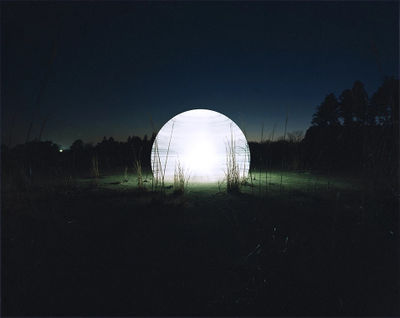 A place where the unknown past and the emergent future meet in a vibrating soundless hum
A place where the unknown past and the emergent future meet in a vibrating soundless hum
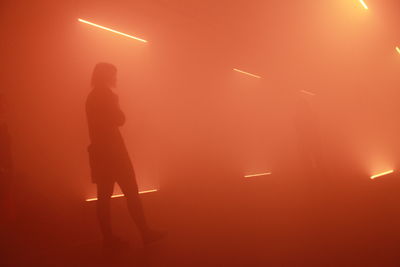 I can’t explain this attraction in terms of anything that’s familiar to you, because I don’t understand it in any terms that I am familiar with
I can’t explain this attraction in terms of anything that’s familiar to you, because I don’t understand it in any terms that I am familiar with
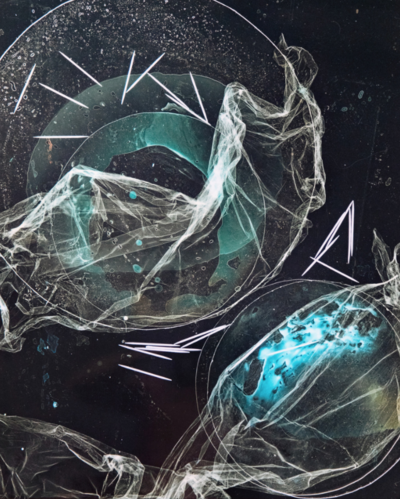 Elsewhere is a negative mirror. The traveler recognizes the little that is his, discovering the much he has not had and will never have
Elsewhere is a negative mirror. The traveler recognizes the little that is his, discovering the much he has not had and will never have
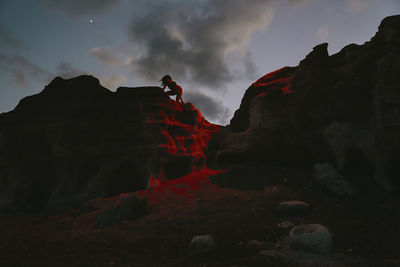 The city does not tell its past, but contains it like the lines of a hand, written in the streets, every segment marked
The city does not tell its past, but contains it like the lines of a hand, written in the streets, every segment marked
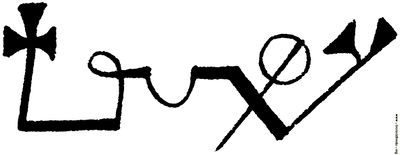 Think of something you want to happen
Think of something you want to happen
Write it down
Discard the repeated letters
Make a glyph of the remaining letters
Focus your desire into the glyph
Think only of the glyph while performing the act
Forget everything
09-10-2017
Notes from "Alien Agency - Experimental Encounters with Art in the making" Chris Salter Boundary leaking, blurring in and out, the body and the room continue as a pattern across other participants. “ I loved the beginning because I couldn ’ t feel where my body ended and the space began ” ; “ as much as there was no visual information, in the dark you still see . . . you still see . . . I don ’ t know what you see . . . but you see something, you know like a black cloud. I would define it like that.
• Non-human forces can introduce sensorial transience, shaking the perception of the stable self, losing a grasp on the outside world, redefining the the edges between subject and object, visible and felt, perceived and imagined
"I had begun as an artist, as one who would manipulate the elements of a reality into a work of art in the image of my creative integrity; I end by recording, as humbly and accurately as I can, the logics of a reality which had forced me to recognize its integrity and to abandon my manipulations ” (Maya Deren)
• to perceptually detect the smallest changes in visual, tactile, and auditory stimuli is
• There are way more than Aristotle's 5 senses. "cross-modal neuroscience and multisensory integration in which neurons in the superior colliculus of the brain actually have been proven to deal with more than one sense modality."
• The changing dialectic between a sensing subject and being perceived by that subject is not altogether discrete, as matter in the world that, due to its electromagnetic and vibratory nature and makeup, impacts the sensory receptors of human and non-human. this interplay is not altogether clear, because the encounter between perceiver and perceived is itself subject to flux and modulation
• The human sense matrix is a direct product of culture
“ The ways we use our senses, and the ways we create and understand the sensory world, are shaped by culture. Perception is informed not only by the personal meaning a sensation has for us but also for the social value it carries. ” • dystoposthesia: the feeling of being forever out of place due to adverse reactions to everyday effluvia
• affect, technology and anthropology are inherently linked. Temp, light, colour, sound, smell elicit emotional and physiological responses that modulate peoples' experiential affect.
• 2 tensions -- Brecht: proposes a critical distance between spectator and event Artaud: An attack on the spectator's sensibility on all sides
I’m forever pulled between the tensions of immersion and artifice. To disorient the spectators while heightening how the world operates. Disorientation, defamiliarization marked by sensorial transformation • The thermal cosmology of the Tzotzil of Chiapas relate images and symbols with heat and cold to the external world, creating a multisensory symbolic system that permeates daily life.
• Intermodal (multisensory) sensations factor a key role in religion and spiritual practice. Synaesthesia and infrasensory signals abound. Sound becomes the vehicle for divine power to awe worshippers and exchange messages with the gods. Voices detached from the body transform into spectral presences that become cult spirits incarnate.
• The acoustic intensity produced by such sounding apparatuses not only intimidate and terrify those outside of the cult, but are also alien to those who, in fact, produce them. If such sounds “ produce an experience without an object, ”then perhaps peak religious experiences operate at “ the intersection of the senses. ”
• When sound and vibration is only analysed from human centred subjectivity, it neglects the agency of the vibrational encounter and ignores the nonhuman participants of this vibrational nexus
• Sound references are associated with experience that creates a habitual expectation of their affect
How could we make a room fluctuate at the border of the phantasmal?
• Experiences of concentrated vision (visual stimuli) can generate shifts in consciousness
• Is it possible to recreate an experience that produces palpable affect beyond sensorial otherness without the usual religious or cultural tools?
• Ritual is performative, a systematised series of repeated practice within set out times and places that constitute significance
• Experimentation allows for alienness to creep into practice, with the unknown as the goal, it is also unknown how the material will affect the maker
• To create an extraordinary experience, the space has to become sacred to enable such an affect
• To minimise sight allows for other senses to become heightened. Vibrations of different intensities allows for an awareness of touch to oscillate. Merging 2 senses allows for intermingling at the borders, at which point they begin to blur.
• Hallucinations often occur within a pre-established set of stored material where shapes and colour waver
• Synesthesia occurs in hallucinatory drug use that defy cultural bounds and reference the wiring of the brain. The mythical dramaturgy experienced by some tribes on ayahuasca can only be seen by them. But the repetitive luminous patterns perceived during the first stage of the trip represent neurophysiologically an entirely different aspect of the experience.
Our work is nothing but translation. Not mirrors or models but assemblages that might provoke sensations to occur. New visceral acts enabled through a technologically orchestrated event that rattles the body, vibrates the soul, and yet is far removed from the original source. What position do we occupy? Insiders, outsiders, or a hybrid of the two?
• Experiences between technique and perceivers are hard to quantify. Affects operate from a distance but also collapse separation. Sensation are part of the human experience and part apparatus that connect, apply their influence, then leave. They operate on the sensorium and the body without leaving traces easily transmuted into words. Is this the experience of an ethnographic encounter with the alien?
• Perception is not necessarily local and leans toward affect, as life is not just bodies and organisms -- culture is not contained in modalities or knowing. It emerges through creative encounters with indiscrete fading nonhuman world. Art functions as a collection of emergent perceptions and affects.
How is it possible that things, stuff at a distance, at a remove, beyond us, not even human, can exert such powerful effects and affects on our bodies, souls, and world?
"This aesthetic, affective encounter is not to be underestimated; it is that which, may irreversibly mark the course of an existence . . . something which draws the subject towards his or her own recreation and reinvention."
• To consider Nonhuman-ness requires us to rethink culture. To see its non-linear, emergent and dynamic being. It eludes description through words and capture. Agency is seen through performance and interaction, in temporal realisation.
• Art is an theatre of the study of being where the split between human agency of the passive machine like world is confronted by the nonhuman, the evanescent.
• Boundaries collapse, nonmodernity recognises alien agency where we are open to the affect of the world, unconstrained by scientific law. Humanity caught in the endless flux of becoming.
Buddhism and the modern self as an unfortunate illusion; zen, the tao, and humanity as caught up in the endless flux of becoming. Something is happening here, and you don ’ t know what it is. A sense of danger and of shame. Drugs, visions, altered states, madness, the loss of control, surrender — everything we ’ ve been taught to feel bad about. Modernity has its defenses in place, and the police are inside us
• Do nonhuman things have a type of consciousness or sentience? Panpsychism is a concept that "all objects or systems of objects, possess a singular inner experience of the world around them ”Such objects could be said to harbor “ mind or mind-like qualities, ”that is, singular experience inherent to them, without entailing anthropocentric notions such as consciousness, life, thought or cognition, perception, or soul."
From the monism of pre-Socratic philosophers such as Thales (all is water), Anaximenes (all is air), Anaximander (all is a boundless, infinite substance called the apeiron), and, most well-known, Heraclitus of Ephesus (all is fire and flux), to Spinoza and Leibniz.
a continuum across Western thought revealing that the universal quality of physical things finds its expression both in the realms of human consciousness and in “ inanimate mentality. Moreover, panpsychism itself is not the only philosophical movement whose ontological premise states, as Thales describes, all things are full of gods.
08-10-2017
Serpentine Gallery - GUEST, GHOST, HOST: MACHINE! Marathon
Talks:
Timothy Morton, Here Come the Lizard People
Hito Steyerl, Bubble Vision
Deep Thinking: On the Promise and Peril of AI: Panel discussion with Andrew Blake, Venki Ramakrishnan and Jaan Tallinn, moderated by John Brockman and Hans Ulrich Obrist
Super Intelligence
Shumon Basar and Fatima Al Qadiri in conversation: Talking about Djinn seen by US soldiers in Iraq
Military Encounters with Djinn
Digital Aesthetics and Affective Politics: Isaac Julien's Audio Visual Installations Isaac Julien
Life-Hacks of the Poor and Aimless
08-8-2017
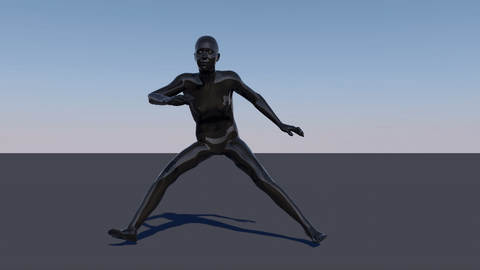
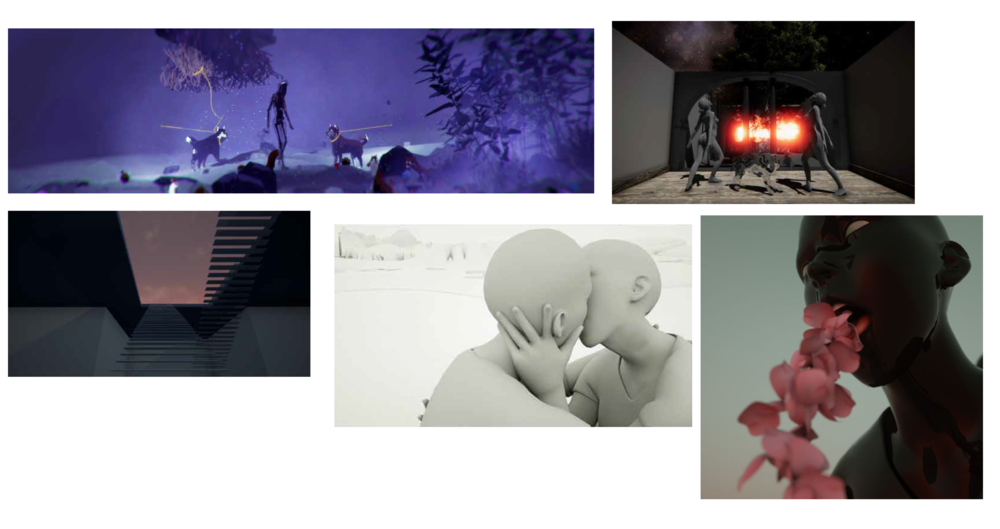 • dislocation from the body
• dislocation from the body
• how symbolic systems interlace with biological systems
• how the human nervous system is co-extensive with inform
